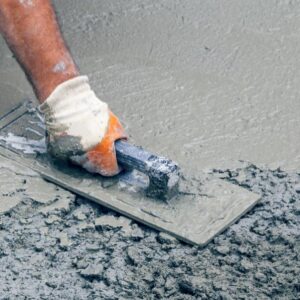Whenever your foundation shows signs of wear or damage, it is vital that immediate steps be taken. Cracked walls could indicate that it has settled or subsided significantly and this could create numerous issues throughout your home.
Foundation repair companies provide various services to address foundation issues in homes. Some of these include:
Steel piers
Steel piers are essential in foundation repair projects in areas with clay soil such as Dallas. Furthermore, these piers are more stable than concrete ones and don’t rust over time. Look out for the best Underpinning Melbourne.
Steel piers offer an efficient solution to foundation sinking and settlement that lifts back a home to its original position, unlike concrete piers that rely on shifting shims for support. Steel piers offer permanent support that restores it back into place over time.
Lifts are an effective solution for lifting sagging foundations quickly, safely, and with minimal impact to structures during installation. They don’t put any additional stress or strain on structures during their setup process.
Concrete piles
Concrete piles are one of the most reliable foundation repair methods available to homes and small businesses, as they can withstand most forms of damage while being easily manufactured for structural strength. Furthermore, they’re more cost-effective than alternative repair options.
A pile is a long cylinder of strong material inserted into the ground to support your home and provide steady support when there is inadequate soil to support its weight. They may be necessary where there is only weak ground available as foundation material for your building project.
Pile designs vary, with reinforced concrete offering greater resistance against tension, compression and bending forces.
Poured concrete piers
Poured concrete piers are one of the most effective and cost-effective ways of repairing a sagging pier and beam foundation. As they’re made up of one solid piece reinforced with steel reinforcements, these monolithic structures may resemble pyramids but their creator thought this made them more stable.
Utilizing these piers will reduce foundational damage and help keep your home level, not to mention that they won’t deteriorate quickly either. They are commonly used when there are lateral forces pushing against the foundation or clay soils have poor load-bearing capacities; though installation might take more time. But their long-term support is well worth your efforts!
Slabjacking
Slabjacking (commonly referred to as “mudjacking”) is an effective solution for sinking concrete slabs, using pumping a mixture underneath it in order to raise it and restore stability. Compared with digging up and replacing foundations entirely, this process is far less costly.
Contractors drill holes into concrete slabs and inject a special mixture, before filling those holes with high-density foam that quickly expands and lifts concrete surfaces. This technique is quick, affordable, and works in all weather conditions.
Homeowners concerned about their foundation may benefit from using this approach to shore it up, especially those living on expansive soils.
High-density polyurethane foam
High-density polyurethane foam injection is an increasingly popular alternative to mudjacking for concrete slab repairs, lifting and stabilizing soil in sunken spots while lifting and lifting up sunken sections of pavement and slab. This technique can also be used on driveways, basement floors and patios that have begun sinking due to sinkholes or sinkholes.
This process is fast, non-invasive, and long-lasting; ideal for homes in Houston where groundwater seepage can occur. Furthermore, its moisture-proof qualities make it perfect for protection from moisture intrusion.
However, this method may not always be effective. If your foundation cannot be lifted using slab jacking and high-density foam alone, interior piers may be necessary. Furthermore, this strategy may not work effectively with houses with two stories or very heavy foundations.
Pier support
Pier and beam foundations can make the repairs process simpler for repair technicians than slab-on-grade foundations, especially if obstructions such as tree roots or utility lines interfere with repair efforts. Unfortunately, any disruptions such as these can significantly add time and costs to projects of this nature.
If your pier and beam foundation is showing signs of distress such as sagging floors or sticking windows and doors, it’s vital to seek repair assistance immediately. A repair specialist can use steel foundation piers or concrete pilings to permanently stabilize and lift back your home to its original position; additionally they may install full crawl space encapsulation to prevent moisture and humidity damage to future foundations.
